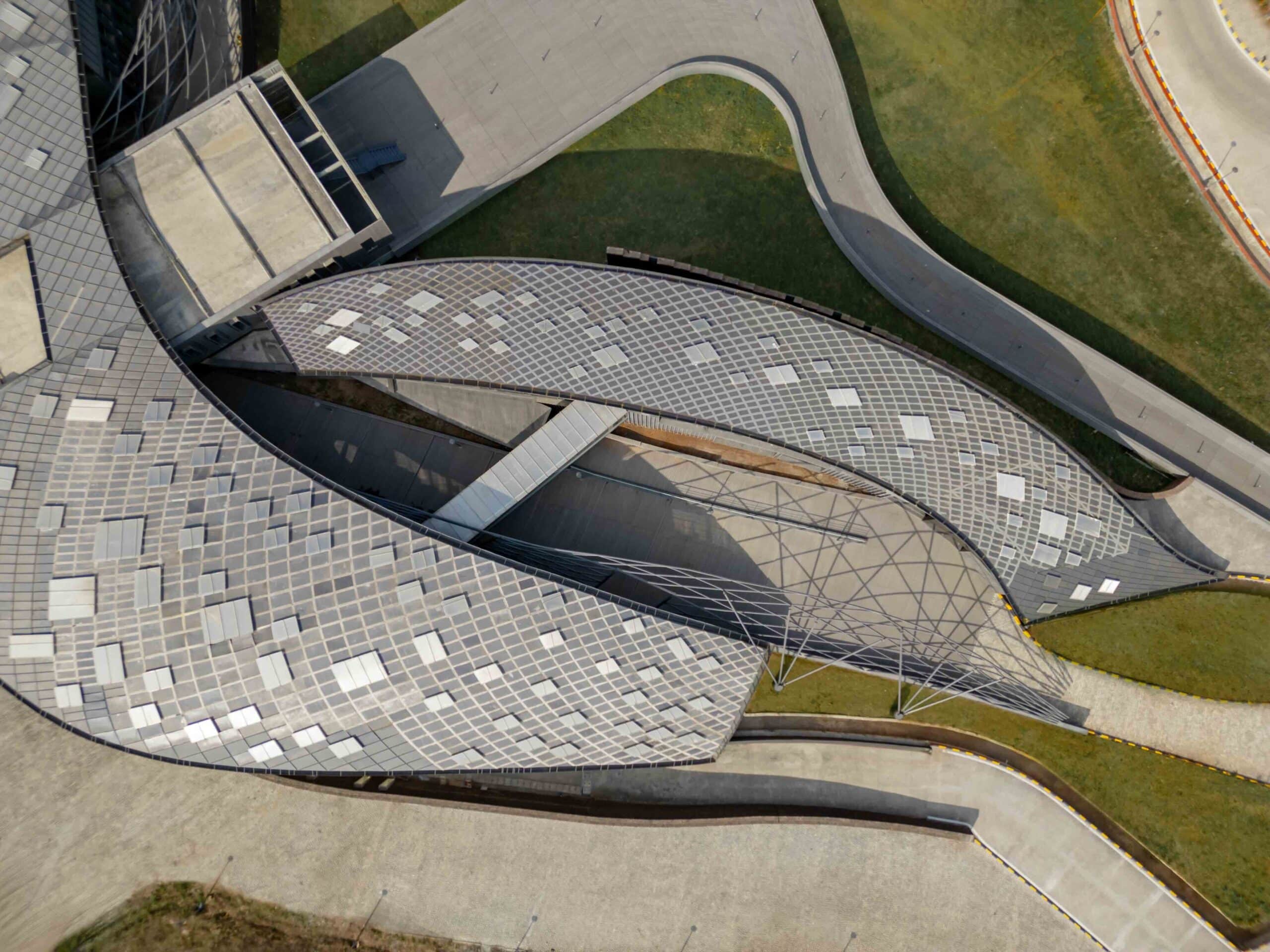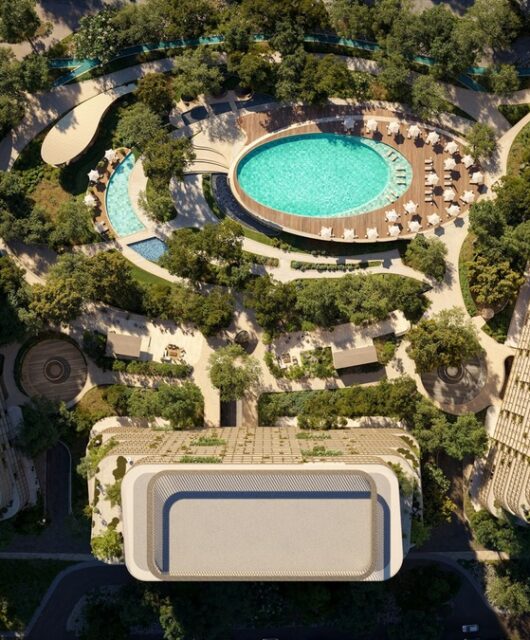
Manish Gulati, Principal Architect at MOFA Studio reveals how the National Institute of Water Sports in Panjim, India merges wave-like architecture with digital fabrication, balancing aesthetics and functionality while promoting community and sustainability.
By Roma Arora
Can you elaborate on the inspiration behind the design of the National Institute of Water Sports (NIWS) in Panjim? How does it reflect the dynamic nature of the sea?
The design of the National Institute of Water Sports (NIWS) in Panjim, India draws inspiration from the dynamic nature of the sea, reflected in its wave-like roof and fluid architectural aesthetic. The sweeping curves of the roof symbolise the fluidity and energy of the sea, while the building’s shifting perspectives create a sense of constant motion. Using local materials and balancing local and global elements, the design integrates seamlessly with its environment. Fluid spaces and seamless navigation mimic the continuous water flow, enhanced by dynamic light and shadow play that animates the interior. Sustainable elements like natural ventilation and double roofing capture sea breezes to lower heat gain and energy consumption, making the NIWS a striking, iconic structure that captures the essence of the sea and the spirit of adventure in water sports. Viewed from above, it appears like a mythical creature born from the adjoining Arabian Sea, while, from the ground, it appears to be in constant motion with its shifting perspectives.
Could you describe the specific parametric architecture and digital fabrication techniques used in the project, and how they contribute to the fluid narrative of the design?
The design of NIWS in Panjim utilises advanced parametric architecture and digital fabrication techniques to create its fluid, wave-like form. Parametric design allows for precise control over the complex geometries of the sweeping roof, capturing the dynamic essence of the sea. Digital fabrication was key in constructing this intricate structure, with over 5000 uniquely shaped roof panels CNC cut and assembled like a jigsaw puzzle. The lightweight grid shell structure, composed of over 15000 pipes, facilitated easy manual assembly, contributing to the seamless wave effect. Additionally, the roof’s pressure equalisation system enhances natural ventilation by allowing sea breezes to flow between the double roofing layers, reducing heat gain. Continuous gutters ensure efficient water flow, further integrating functionality with the fluid aesthetic. These techniques combine to embody the sea’s dynamic nature, creating a cohesive, visually striking, and functionally efficient design.

How did you integrate technology into the design of NIWS Goa to enhance functionality, sustainability, or user interaction?
The design harnesses sea winds and incorporates high roofs with louvers and double roofs to reduce air-conditioning use. A rainwater collection pond captures natural rainwater, reducing groundwater reliance. Local materials like granite cladding, laterite walls, and low-emissivity glass ensure durability and lower maintenance. The roof features a digitally fabricated grid shell, with over 15,000 pipes and 5,000 custom panels creating a wave-like structure that manages water flow and controls costs effectively. This approach minimizes the building’s carbon footprint and enhances sustainability.
How did you balance functionality with aesthetics in designing a facility that serves both educational and adventurous purposes?
We divided the building into distinct zones—institutional, administrative, residential, and recreational—while creating fluid, barrier-free spaces between them. This design promotes informal interactions. Ramps and bridges ensure seamless movement. Every part, including the pool, is accessible to all users.
You enter via a winding bridge over a rainwater pond, which widens into an urban plaza for student gatherings. Corridors and plazas connect seamlessly with ramps and bridges for barrier-free movement. A wide bridge links classrooms to the library, serving as a semi-formal reading space. The auditorium is accessible from classrooms, administration, and the plaza, with hostels close to classrooms yet private.
What were some of the key challenges faced during the design and construction phases, and how were they overcome?
Building a project at this scale, with an expression that gives due importance to this kind of an institute, in extremely tight Government budgets, came with its plethora of challenges. The tight budgets and the lowest bid contract were two constraints that led us to adopt a systematic approach. The fund distribution across the project had to be equity-based through the choice of the right materials and the use of technology was needed to simplify construction methodology literally, like a child’s play. While one part of the office dealt with bureaucratic clearances, the other part was constantly simplifying and innovating newer, simpler methods of construction closer to the hard ground reality.

How does NIWS Goa contribute to the local community and its engagement with water sports and tourism?
Goa relies on its coastline for economic growth, with fishing, tourism, and marine tourism as key industries. This new public institute in Asia offers a range of courses, from short-term certifications in water sports and lifeguard training to long-term degrees in Travel and Tourism Management, helping local youth find employment. It also provides workshops on sustainable fishing practices.
What are your hopes and aspirations for the impact of NIWS Goa on architectural discourse and future projects?
With over 90,000 architectural firms in India, only a few effectively use computational design and digital fabrication. Often, technology is made so expensive that it becomes merely cosmetic rather than a functional construction tool. This project, completed with tight government budgets, shows that high costs are due to application practices, not the technology itself. We hope it will encourage a more pragmatic, system-oriented approach to design and construction in Indian architecture.







